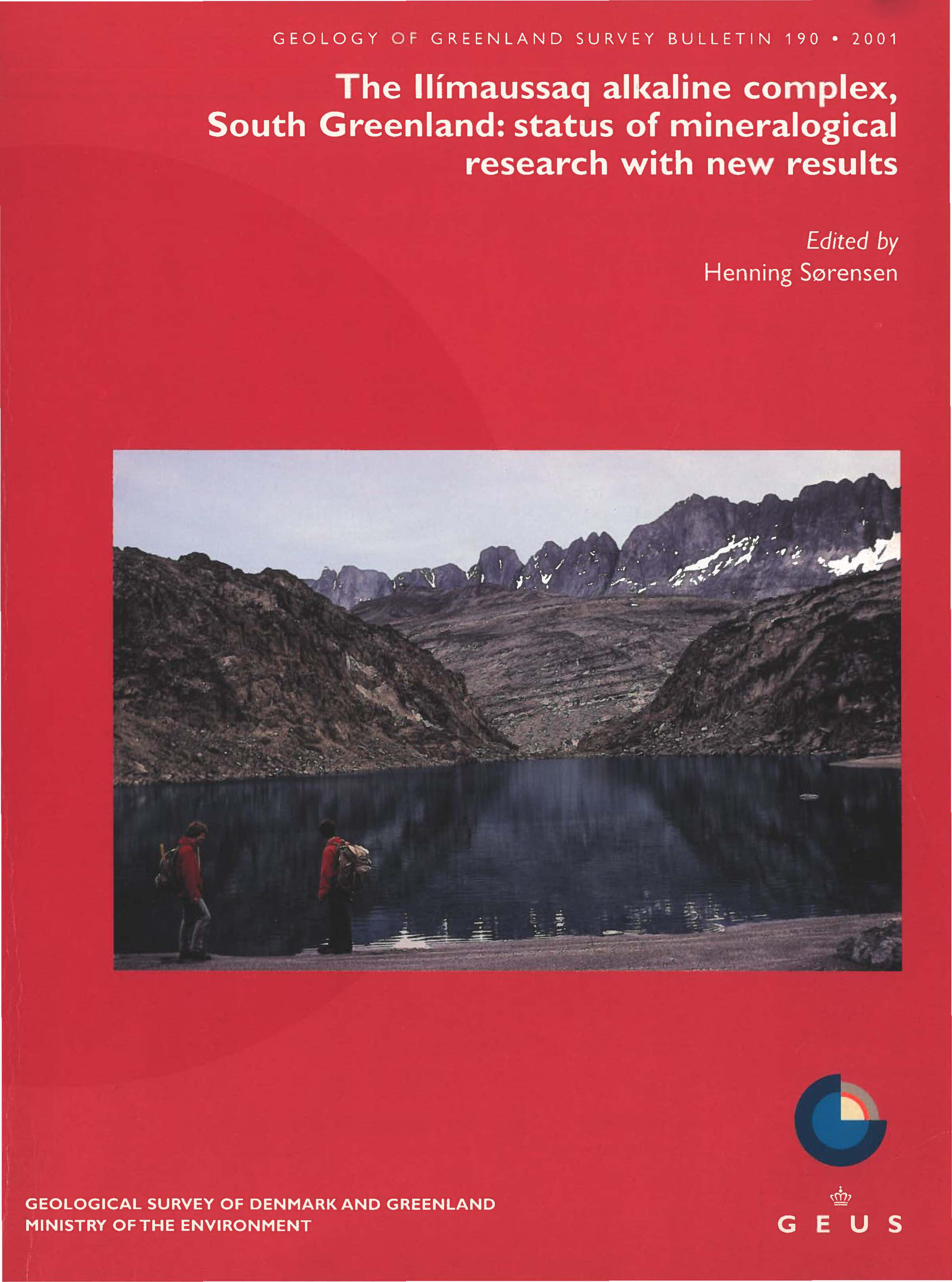The hyper-agpaitic stage in the evolution of the Ilímaussaq alkaline complex, South Greenland
DOI:
https://doi.org/10.34194/ggub.v190.5177Keywords:
agpaite, Greenland, hyper-agpaite, IlímaussaqAbstract
The term hyper-agpaitic covers mineral associations characterised by a wealth of Na-rich minerals such as natrosilite, zirsinalite, ussingite, vuonnemite, vitusite and lomonosovite. This mineral association clearly indicates a higher degree of alkalinity than for agpaitic rocks in general. In the Ilímaussaq complex hyper-agpaitic mineral associations occur not only in pegmatites and hydrothermal veins as in the Kola complexes, Khibina and Lovozero, but also in highly evolved lujavrites and in the fenitised volcanic rocks in the roof of the complex. This paper reviews the occurrences of hyper-agpaitic mineral associations in the Ilímaussaq complex. The mineral assemblages are determined by an interplay of temperature, pressure, oxygen fugacity, alkalinity, especially the concentration of Na, and contents of elements such as Zr, Ti, Nb, REE, Fe, Mn, U, Th, P, F, Cl and H2O. Increasing and decreasing stages of alkalinity may be distinguished. At increasing alkalinity nepheline is for instance substituted by naujakasite, while at decreasing alkalinity and temperature naujakasite is substituted by analcime.
Downloads
Published
Issue
Section
License
This article is distributed under a CC-BY 4.0 licence, permitting free redistribution and reproduction for any purpose, even commercial, provided proper citation of the original work. Author(s) retain copyright over the article contents.


